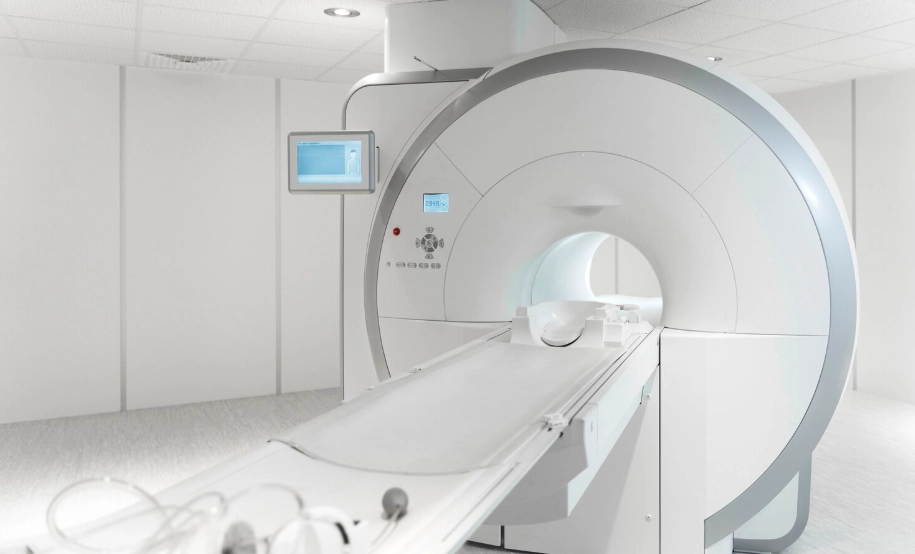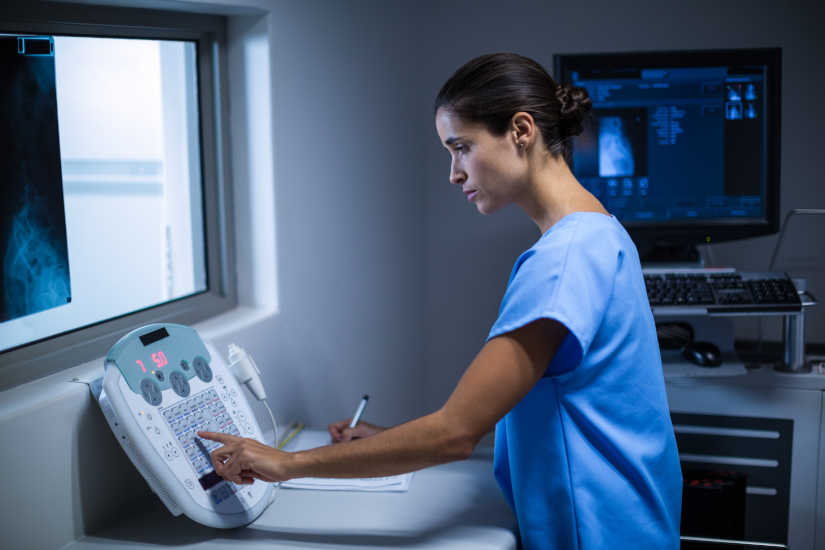The technology has had a significant impact on the healthcare system, especially in the radiology area. In recent years, one of the most relevant changes following the advent of the Internet has been the use of computerized systems in the field of image diagnosis. This has allowed the development of a digital imaging department where medical information can be managed and stored conveniently and securely.
In a digital imaging department, we can distinguish three fundamental tools: the PACS system, the RIS system and the HIS system. In the following article, we analyze what the PACS system is, how it works and its relationship with the RIS and HIS system.
What is the PACS system in radiology?
The term PACS stands for Picture Archiving and Communication System, which refers to Image Archiving and Communication System. This is a computer software used in the radiology area for the following purposes store, manage, present and share medical images and diagnostic procedure reports electronically.
Before the advent of the PACS system in radiology, the images generated after diagnostic examinations were stored in a physical format, mainly as radiographic films. Therefore, from the time the medical test was performed, there was a long process until the final image was obtained. With digitization, it is now possible to resort to a AI software for the different medical teams to obtain an accurate faster and more efficient access to informationwhich will allow optimize workflow in clinical practice.
How does the PACS system work?
A PACS system consists of a series of mechanical and electronic components which are connected to each other by a copper or fiber optic communication network. Specifically, we can differentiate between four main components:
- Image acquisition hardware
- Workstations for image interpretation and review
- Servers for storage and transmission of images
- Network for data transmission
All these elements work in an integrated manner to allow medical images to be captured, stored, distributed and displayed digitally. Through the use of this network, the graphic information generated in different studies, such as a CT scan, is transmitted to the magnetic resonance imaging o TAC.
How does this process unfold?
First of all, data from the system servers is passed to the archiving drives. Subsequently, they are distributed to the stations where radiological physicians review the generated medical images and also to the teleradiology serverswhich allow access to the archive through the Internet.
With a digital radiology PACS system, you can view images remotely from any medical department, office or externally. To do so, health care personnel have special identification codes which allows them to access diagnostic tests for each patient.
The DICOM medical imaging communication standard
For information and images to flow through the PACS system components, it is necessary to comply with the DICOM medical image communication standard. DICOM stands for Digital Imaging and Communications in Medicine and is a standard for the communication of medical images. standard for digital storage and transmission of medical images and related patient information.
It is responsible for define the file format and structure and, in turn, includes a communications protocol to facilitate connectivity between medical devices and systems. However, it should be noted that the majority of modern devices and medical equipment current DICOM images are produced.

Advantages of using a PACS system in radiology
We analyze the main advantages offered by a PACS system in the management of radiological images:
Improved workflow in radiology departments
Radiologists and medical teams involved in the diagnostic imaging process can access and review digital images from any workstation on the hospital's network or remotely through the web server. This allows rapid consultation of studies and collaboration between physicians and specialists.
Error reduction
As the format of medical images is no longer physical, eliminating the possibility of duplicate diagnoses and also reduces both the risk of loss as the damage of the generated medical images.
Integration with other IT systems
One of the main advantages of the PACS system is that it allows the integration with other IT systems that can be used in health careThe RIS (Radiological Information System) and HIS (Hospital Management Software).
Capacity to store large volumes of data
Not only is it essential for clinical management and patient care, being able to store large volumes of medical imaging data is a key aspect for research and education in the area of health and medicine. In this way, researchers can access image databases for studies and students in training can use many of the images as educational material.
More accurate and detailed diagnosis
The use of the PACS system provides a more detailed reading of the diagnoses. This is mainly because the images are reviewed on high-resolution monitors and can be manipulated more accurately, which helps to detect abnormalities present in the image more quickly and accurately.
Saving time and resources
Another of its advantages is that it offers a time saving and a decrease in the workload of the staff.The cost of printing X-rays and other radiological elements was also reduced. At the same time, waiting times and resources at the hospital level are reduced.
Relationship between the PACS, RIS and HIS system
PACS, RIS and HIS are three systems key components in the digital health informatics ecosystem. Their interrelation is essential for the efficient functioning of the healthcare services of any clinic, health center or hospital. While the PACS system in radiology is used to manage, store and share images of the different diagnostic imaging procedures, the RIS and HIS system have other functions. What is each used for and what is the relationship between them?
The RIS system
The RIS system or Radiology Information System, is the program that runs the digital radiology department. It is a software that contains all the information of the radiology area and hospitals, thus enabling manage information and processes related to diagnostic imaging services.
Functions performed
- Scheduling of appointments and studies
- Order generation
- Recording of results with the generated medical images
- Workflow management in the radiology department
The HIS system
As for the Hospital Information System (HIS), it is a system of hospital information system. By using it, all the data are stored in the data related to the management and administration of a hospital. It is designed to manage all areas involved in the operation of a hospital from a single platform.
Functions performed
- Management and scheduling of medical appointments
- Patient care: Administration of patients' medical records and results of medical examinations performed.
- Human Resources
- Billing
- Monitoring the quality of medical care
Interaction of PACS, RIS and HIS systems
- HISThe central system that coordinates and stores all patient information in a clinic or hospital facility, including demographic, clinical and financial data.
- RISIt communicates with the HIS system to obtain relevant patient information and to manage the radiology area. It is used to schedule radiological procedures requested from other areas of the hospital.
- PACSRIS-PAC: Works hand in hand with RIS to store and manage the medical images generated by the requested studies. The RIS-PAC interaction allows the report to be presented in both systems so that each report appears linked to the images of the study performed.
Conclusion
The PACS system is a fundamental tool in the radiology area to be able to store and manage medical images digitally. All of this helps to improve healthcare and drive faster, more detailed and accurate clinical diagnosis.
If you need more information about our imaging solutions, just contact us and our staff will give you personalized advice.
BIbliography
Ochoa, P. J., Murillo, M. R., & Torres, J. A. (2004). PACS system (picture archiving and transmission system). Anales de Radiología de México, 3(3), 153-162. https://www.analesderadiologiamexico.com/previos/ARM%202004%20Vol.%203/ARM_04_3_3_Julio-Septiembre/arm_04_3_3_153-162.pdf
López-Arroyo, A., Villarreal-García, A. J., & López-Arroyo, S. (2005). The DICOM format and PACS systems in medical imaging. Gaceta Médica de México, 141(5), 477-485. Retrieved from https://www.scielo.org.mx/pdf/gmm/v141n5/v141n5a11.pdf
Clinic Cloud (n. d.). DICOM format: what it is and how this standard works in medical imaging. Retrieved from https://clinic-cloud.com/blog/formato-dicom-que-es-estandar-imagenes-medicas


